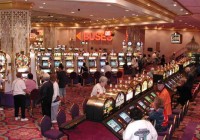Invest In The Philippines – Buy The IShares MSCI Philippines ETF
Summary High growth English speaking economy entering the demographic window and with great jobs growth. Very low household debt at 6% of GDP and a strong property market. The PSEi has moved sideways in 2015 providing a nice entry point now. The Philippines has been undergoing rapid change in the past decade and is set to continue as they enter the “demographic window.” It is one of very few countries in the world that speaks perfect English and still has cheap labor. But first some key reasons to invest in the Philippines stock market; GDP growth at 5.6% pa – the third fastest in Asia. Strong domestic driven economy not very affected by the China slowdown, with resilient overseas remittances. Rising middle class, and very strong demographics. The stock market has recently retreated and valuations are now better or fair. The Philippines GDP growth target set by the Government is for 7-8%pa growth. Other countries once they have entered the demographic window have posted an average growth of 7.3% during the first 10 years. According to the IMF the Philippines is currently growing at 6.0% in 2015, and forecast for 6.3% in 2016. The two main drivers of the Philippines economy are Overseas Foreign Workers (OFWs) remittances, and Business Process Outsourcing (BPO), which mostly covers call and data/back office processing centers. OFW remittances are growing around 6%pa , contributing $25b in 2014. The BPO sector is growing rapidly around 15%pa, contributing $18.9b in 2014, and employing over 1m people. It is expected that BPO revenues will overtake OFW remittances by around 2017 . Add to this a growing tourism and manufacturing sector (mostly electronics) and some agricultural exports and the economy is very resilient. With strong money inflows into the Philippines and rising jobs the property sector is also booming. There is a massive pent up demand for housing, and household debt is extremely low at a mere 6% to GDP. As a result the property developers (Ayala ( OTC:AYAAY ), Robinsons, SM) and the major banks (BPI, BDO, and Metrobank) are also booming. The banks are making good net interest margins around 3.02% , and growing their loan books 20% pa, with non-performing loans at a very low 1.8% and double digit profits. Total Philippines debt is relatively good. According to McKinsey research : The Philippines is one of the few countries in the world that has seen deleveraging. The ratio of total debt-to-GDP has been flat since 2008. In fact, it has declined if we look as far back as 2000. Corporates have the highest share of debt as a percentage of the economy at 71%, followed by the government at 40% and households at 6%. The current Government seems to have reduced corruption, and has brought the Government debt down and increased infrastructure spending. Source The Demographic Window In 2015, the median age in the Philippines is only 23.4 yo. The “demographic window”, is loosely defined as a period when a great majority of the population are of working age. The Philippines working-age population (between 15 and 64 years old) this year (2015) accounts for 66.6 percent of the total population of 101.6 million. By 2020 this will have reached 68% and by 2030 70.6%. Source Living here in metro Manila, I can certainly testify that the growth is real. Everyday I see Filipinos rising into new employment (maybe a call centre, or property agent), buying a smartphone, and buying condos. Jobs ads are often for 500 workers at a time. Manila skyline is changing rapidly under a construction boom. New cities within Manila have been growing and continue to be planned such as the Mall of Asia Entertainment (Casino) City , the Las Vegas of Philippines. Currently being built it will provide 4 new casinos, 6,000 hotel rooms, and 1.8m new jobs for the whole of Entertainment City. Global City (within Manila) is a whole new international business district that has grown from nothing in a mere decade. Global City Skyline Source The Philippines Stock Exchange (PSE) Index (PSEi) The best way, in my opinion, to invest in the Philippines stock market is to buy the index. The PSEi is currently at 6,932 down 2.93% for the past year, and the index has a year low of 6,603 and a high of 8,136 (see graph below). (click to enlarge) Source The PSEi trades on a current PE of 19.88. iShares MSCI Philippines My recommendation for Americans and most international investors would be to simply buy the index using the iShares MSCI Philippines ETF (NYSEARCA: EPHE ). The index is well diversified with the largest sectors being property developers and banks. The top 5 holdings are Ayala Land, Philippines Long Distance Telecommunications (NYSE: PHI ), Universal Robina Corp. ( OTCPK:UVRBY ), JG Summit ( OTCPK:JGSMY ), and SM Prime ( OTC:SPHXY ). If you want exposure to one of the fastest growing economies in Asia and the World, with brilliant demographics and a rising middle class, with strong jobs growth, at a reasonable valuation then EPHE is a great long term investment. Risks The usual risks apply to emerging markets. Currency risk would be the main one to consider. Also there will be an election in 2016 and a new Government. Geo-political risk is another with recent South China Sea issues with China.
